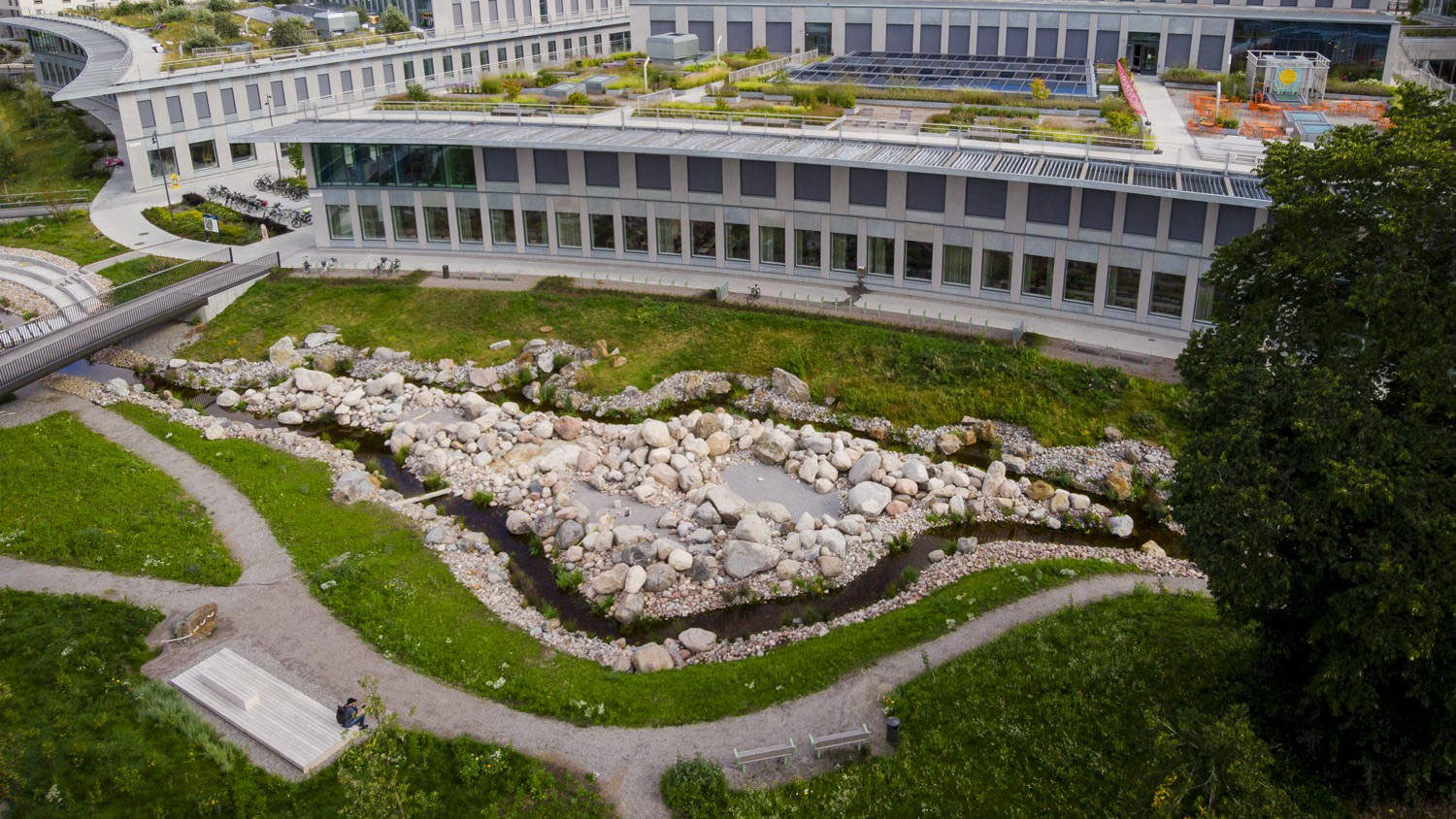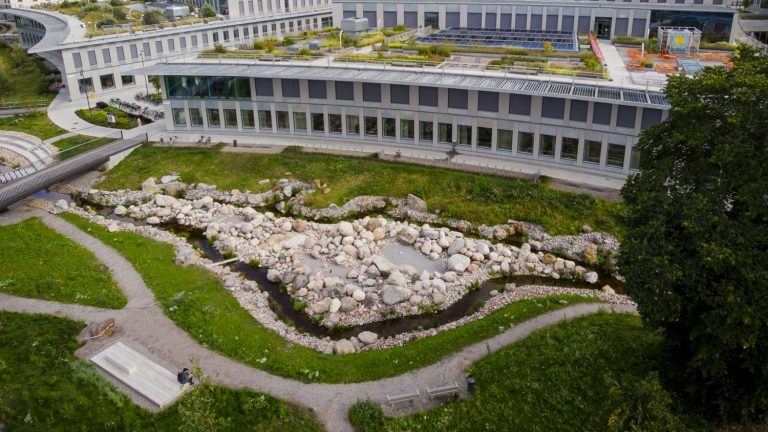An island that continuously asks questions about the impact of climate change on nature. The living artwork Future Island has been inaugurated at Albano in Stockholm – a collaboration between Public Art Agency Sweden, Akademiska Hus and Svenska Bostäder. Discover the artwork on site at Albano this autumn and join us for an artist talk and see the exhibition at the Public Art Agency on Skeppsholmen.


The artwork emerges in a stream at Albano at Stockholm University, and is created by OOZE (Eva Pfannes och Sylvain Hartenberg) och Marjetica Potrč. It comprises an island divided into two zones, one of which is sustainably heated to be five degrees Celsius warmer than the other. The changes that occur over time will demonstrate the impact of climate change on nature. The same kind of plants are planted in both plant zones on the island. How will they develop and adapt to the different climates of the island?
“Future Island is a narrative landscape. Its story is climate change.”
“Future Island is a narrative landscape. Its story is climate change. With its experiment of a micro-ecosystem that simulates global warming conditions by artificially heating half of the island +5˚C it is a conversation piece observing how flora, fauna and humans adapt to warmer temperatures. As a living artwork it challenges us to redefine adaptation not as a mere reaction but as an opening up of possibilities,” says the creators of the artwork, OOZE (Eva Pfannes och Sylvain Hartenberg) and Marjetica Potrč.
An example of a designed living environment
Future Island is a site in which history and the future cooperate – a place where 1.8-billion-year old stones face an uncertain future. The island is 325-square-metre large and has been built of local stones, thus addressing the history of the site.
“Future Island is a typical example of how the Public Art Agency works with designed living environments.”
“Future Island is a typical example of how the Public Art Agency works with designed living environments. Here architecture, urban planning and art interact to create long-term qualities in one of our shared spaces in the city. This has only been possible to achieve by the close collaboration between different professional roles and that the art has been an undeniable part of the site’s design already in the early planning of Albano – a work that has been going on for almost a decade and in dialogue with many different actors”, says Patrick Amsellem, director of the Public Art Agency Sweden.
Read more about Future Island here.
Open program abount the artwork in September
September 26th at 18.00 – an indepth talk about Future Island.
OOZE (Eva Pfannes och Sylvain Hartenberg) and Marjetica Potrč take part in an indepth talk about the artwork – what roles do people, nature, culture and the environment play in the future? What new perspectives do we need to be open to when we take on the challenges of the future?
Also participating are Lotta Mossum, curator Future Island, Cecilia Åsberg, professor and researcher, and Karim Jebari, philosopher and futurist.
The talk is held in English.
September 26th – January 30th 2024 – Exhibition The Snake and the Island – When Art Takes Hold of the City
What happens when art invites us to redesign our shared urban spaces? How does it affect the future and the way in which we experience the spaces? The exhibition takes you on a journey through lines of thought on the artworks Future Island and Rainbow Snake.
Find out more about the events in our calendar.
About OOZE and Marjetica Potrč
OOZE was founded in 2003 by Eva Pfannes and Sylvain Hartenberg. Based in Rotterdam, the Netherlands, OOZE works in the interface of art, architecture and urbanism. Since 2008, they have collaborated with Marjetica Potrč, an artist, architect and researcher based in Berlin and Ljubljana.